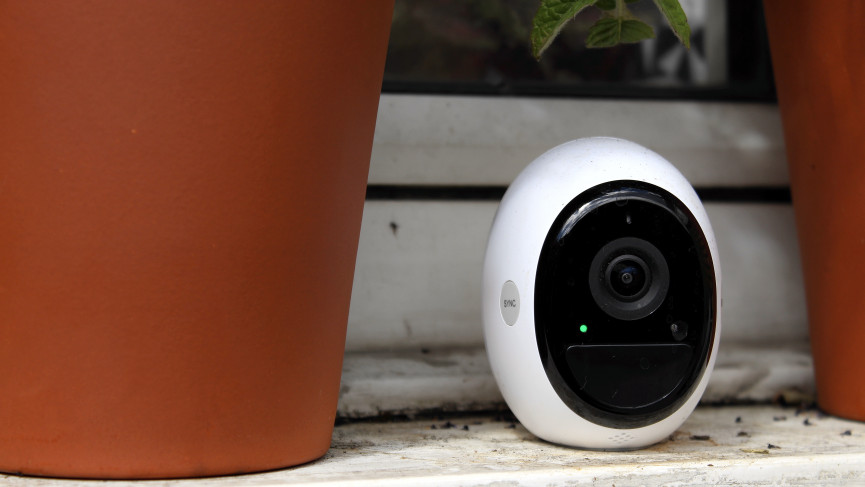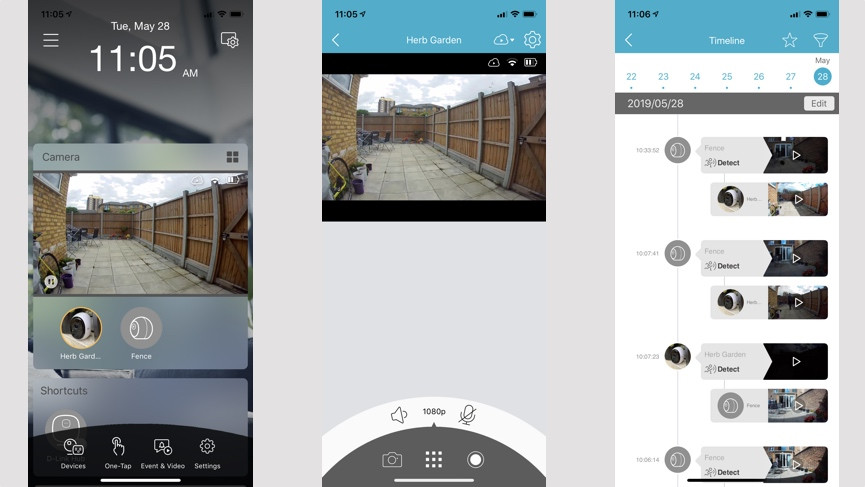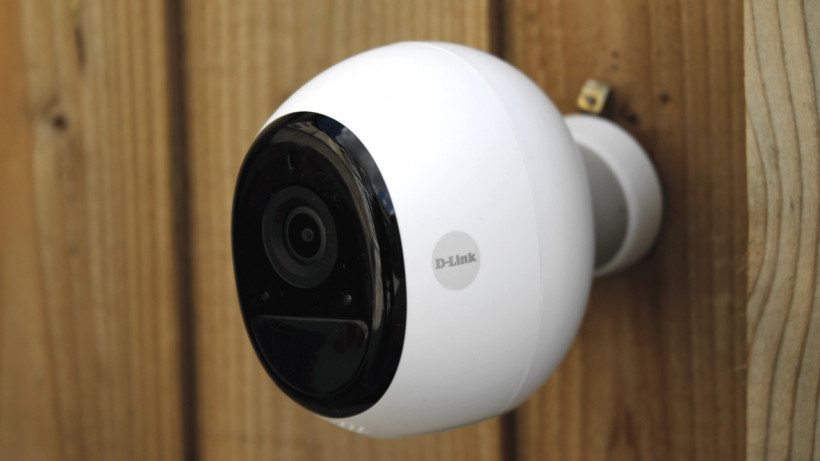A promising smart security camera setup that fails to capture confidence
The DCS‑2802KT‑EU is a wire-free camera setup with mild highs and dizzying lows, equating to an experience that feels just about good enough, rather than something you'd recommend to others. The cameras and hub are easy to set up and offer some strong features – such as 1080p Full HD recording and two-way audio – but the app experience makes this a real chore to deal with at times. If you just want the basics of cloud recording in decent quality, this is still a viable and affordable system, but don't expect a smooth ride until app issues are resolved.
Pros
- Video quality is good and consistent
- Setup and installation is easy
- Relatively affordable + free cloud plan
- Battery is solid
Cons
- Hellish app experience
- Scheduling is pointless
- Sensitivity issues
- Can't continuously record
D-Link isn’t new to the world of smart security, though the Pro Wire-Free Camera Kit – officially, the DCS‑2802KT‑EU – does represent the first dual-camera setup from the company.
Unfortunately it’s one that’s not yet available in the US, though (as we’ve seen in other territories) it is likely an equivalent of this European-friendly duo will land stateside in the near future – after all, it’s a key battleground in the smart home, and an expansion that would allow D-Link to compete more realistically with Nest, Arlo and others.
However, even though the Wire-Free Camera Kit may not be able to stake a claim as the top smart security camera just yet, it does offer many of the same features as higher tier rivals: links to Alexa, Google Assistant and HomeKit, Full HD recording, cloud storage, two-way audio and a wire-free design.
With the standard kit – including the hub and two wire-free cameras – currently coming in at £299.99 (with the usual price being £440), though, this is also far from being a budget option. Is it worth the investment, or are you better served elsewhere?
We’ve been living with the setup in order to find out.
D-Link Pro Wire-Free Camera Kit: Design

We won’t dwell on the physical design too much here – really, this is very similar to what we’ve seen from Arlo’s recent outdoor cameras. Don’t get us wrong, we’re definitely fans of the small, rounded pair’s look in the garden or around the home, but what’s really important to zero in on here is how they mount and connect.
Of course, we mention the outdoors here because both the Pro cameras are IP65 rated, meaning they’re weatherproof. And for the purposes of this testing, we placed both our cameras in the back garden – one nailed to the fence and one sitting on a shelf amongst a budding collection of herbs.
Budget smart home: Top budget smart security cameras
We wouldn’t say they’re that discreet – white, obviously, is going to stick out against most things in a garden – but it’s fine. And the versatile magnetic mount means you can mount and move the facing direction of both cameras with ease. As the long-winded name gives away, there are no wires to contend with here, either – vive la révolution.

(The green LED will light whenever motion is being captured on the camera)
Unfortunately, we didn’t have a drill, so we couldn’t quite hammer our way through the fence and fix the magnet in place, but we were able to improvise and hang it from a picture hook. That magnet, by the way, is strong; enough that you’ll need to put your back into it if you want to take it off completely, and you’ll probably need both hands to reposition the device. This is great, naturally, because it means strong winds or nosy animals won’t tip it over.
Once it’s all set up, you’re able to view the camera’s live feed within D-Link’s app, with the green light turning on whenever a motion/sound event occurs. If your cameras drop their connection from the hub, you can also press the sync button on the side to reconnect.
That hub, shown below, is obviously an added bit of faff here, as you’ll have to make space and connect it to your router. However, it pays dividends, with our cameras maintaining a fair or good connection despite being on the other side of the flat – and having to pass through plenty of walls. In total, you can sync up to four Pro cameras with the hub, though you’ll have to buy these separately.
In terms of charging, this is really simple, thanks to that magnet design mentioned above. If your usage is high, you’ll need to recharge every couple of weeks, which isn’t ideal, but all you’ll need to do is pull the camera off the mount and stick a Micro USB in for a couple of hours to get it going again. If you’re more relaxed with how often you want cameras to record, you could easily stretch this out past a month. It’s entirely up to you.
D-Link Pro Wire-Free Camera Kit: Features

In terms of features, as we say, the D-Link actually stacks up fairly well against many of the best cameras the space has to offer. There’s a 140-degree wide-angle lens, Full HD 1080p sensor and 4x digital zoom, as well automatic night vision for capturing movement in the dark.
You also have a few different ways of storing captured footage. D-Link generously offers a free year of its Cloud Recording plan upon purchase, meaning you can store all your captures, though you can also save them through a MicroSD slot, external drive or on your connected phone or tablet. And if you do get buzzed about a motion event in real-time and want to activate the two-way audio, we’ve found this works fairly well. There’s a slight lag, and the voice does sound like you’re communicating through a walkie-talkie, but it’s good enough.

Admittedly, there’s nothing fancy here, like 4K video, noise cancellation or 180-degree imaging that can later be flattened, but it’s certainly enough to get by. And considering you get two cameras in the set for roughly, right now, £250 cheaper than the Arlo Pro 2, it’s not a bad deal. Add in the fact you get your first year of storage for free – only paying £21.99 for seven days of storage after that in the Basic package – and it’s even cheaper, on the whole.
So for the most part, the D-Link Pro pair behave as they should. Connections have been fairly stable, with only a couple of drops from the far-away hub in our week or so of testing, and the camera performance (something we’ll detail more below) is definitely good enough for those who just want an above-average camera for the home. It really becomes a case of whether you want to fork out almost double for the premium features the likes of Arlo offer.
D-Link Pro Wire-Free Camera Kit: Camera performance
The camera performance of the Pro cameras is good, again, but doesn’t hit the gold standard of security footage. As shown in the video of Mr Black Cat below, there’s a fairly noticeable bit of lag as he roams around our back garden. It’s not terrible – you can still see what’s going on – but it does means that some steps are jumped over.
And that’s without the image capturing issue itself. Whenever there’s a motion event, you’ll be pinged at least three or four notifications for the same event – and that can get real annoying if Mr Black Cat wants to wander around the garden for 5-10 minutes at 6am, as he does most mornings.
We could understand if he was wandering to different zones, but, without the option to set that with these cameras, you quickly end up with a lengthy stream of 15-second videos of much the same thing. We’d prefer if it recorded continuously, until the motion had ended, and highlighted key moments you could skip to.
Still, depending on the sensitivity you set your cameras at, they’ll generally react well. Put your bedsheets out to dry and any flailing will immediately see the camera’s green LED flash up, even at 50% sensitivity, and any sirens or bumps in the night will immediately kick in recording, even at 30%. Unless you enjoy the feeling of 150 notifications from your camera per day, you won’t want to mess with anything above 75% sensitivity.
Have we had any other issues with recording? Well, yes. There’s actually been times when we’ve spotted Mr Black Cat on the wall of our garden at night and the camera has failed to pick it up, or we’ve opened the back door slightly and nothing has registered. This didn’t happen enough times to label the setup as inconsistent, though, and was likely a connection dip. Generally, the cameras act oversensitive; even a bee buzzing is enough to set off these things at 50%, and that grows tiresome when you have one set up around a lavender pot, trust us.
At night, the footage actually manages to stay true to what’s captured during the day, offering the same 1080p Full HD quality and sharp visuals. Whether it’s cats, mice or a siren on the road, both cameras routinely pick this up. And it cleverly managed to differentiate between actual noises and, say, when rain started and landed near the microphone.
So, all in all, it’s not bad. You’re not getting elite footage, but it’s a relatively clear and handy reference for indoors or your back garden. You’ll want to probably tweak the settings within the app, otherwise you’ll end up with a mountain of notifications from the app – which, speaking of…
D-Link Pro Wire-Free Camera Kit: App and smart integrations

Oh, the app. There is a special place in hell reserved for the Mydlink app. And it’s not even that it’s necessarily that bad to look at, it just takes a soul-destroying amount of time to jump from menu to menu, nothing really works the way you’d expect it to and there’s plenty of things missing.
So, let’s start with those loading times. If you have the gall to jump into the settings menu and then try to come back out of it, that can take you a good minute or so before the app either decides to let you, or it crashes. Want to view your live feed? Ha – who do you think you are? That’s at least another couple of minutes of your time, even if Wi-Fi is strong and you’re close to the cameras. It goes on like this for much of the in-app experience.
Read next: Best cameras that work with Alexa
If you do manage to load a live feed of your cameras, or play an old clip (slightly easier, admittedly), there’s the baffling viewing experience to contend with. The sound of the clip won’t play automatically, and you can only listen in by shifting the control panel at the bottom to play sound – something that’s so unintuitive it took us a week to figure out by accident. And even if this apparent ‘sound mode’ is turned on, tilting your screen horizontally turns it off sometimes, and you’re not even able to cycle back and forward through a video.

(You can ask your Google or Alexa smart display to show you a live feed)
On the surface, as we say, things are actually quite inviting. It’s only really when you delve into things like the One Tap menu (something that’s supposed to create an easy path for your automations) when it all gets a bit confusing. Why? Well, mainly because the only real settings you can tweak are to put the cameras in or out of private mode, and which times this happens. So, if you want to, for example, keep the cameras running in the night but don’t want to receive notifications, you can’t do this. Want the cameras set to 10% sensitivity in the day but another sensitivity percentage at night? Nope, sorry.
There was also the annoying matter of our cameras refusing to work with the app until we reset them. Things were initially running smoothly for the first 24 hours after setup, though we had around 12 hours in which both cameras didn’t talk to our phone (despite the hub indicating they were connected). Things have ran as expected since, but it’s something to keep in mind if you do encounter issues.
In short, the app is a real letdown of the actual hardware, which for the most part holds up its end of the bargain. We can only hope this improves with future updates, because, as we say, the bones of a good app is already in place.

(Rich notifications are now available through phone, tablet or smartwatch)
Thankfully, this laughing stock doesn’t extend to the integrations with the smart home. As we mentioned up top, whether your home setup runs through Google Assistant, Alexa or Apple HomeKit, you’re catered for with these cameras. This doesn’t give you much control, but it does allow you to view the live feed through a smart display, as shown above, or turn them on or off through the power of your voice. With a recent app update, there’s now also rich notifications available for your phone, tablet or smartwatch – meaning you can get a quick snapshot of a motion event.





